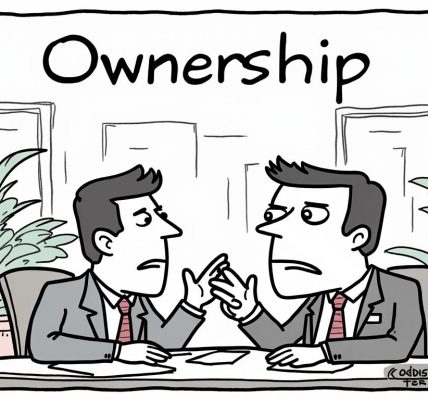Investing in Commercial Real Estate in the USA: Office, Retail, Industrial

Investing in Commercial Real Estate in the USA: Office, Retail, Industrial
Reading time: 12 minutes
Ever wondered why savvy investors are pouring billions into commercial real estate while others struggle to understand the game? You’re about to discover the insider strategies that separate successful CRE investors from those left watching from the sidelines.
Table of Contents
- Understanding the CRE Landscape
- Office Real Estate: Navigating the New Normal
- Retail Properties: Evolution and Opportunity
- Industrial Real Estate: The Supply Chain Revolution
- Strategic Investment Approaches
- Financing Your CRE Investment
- Building Your Commercial Portfolio Blueprint
- Frequently Asked Questions
Understanding the CRE Landscape
Here’s the straight talk: Commercial real estate isn’t just about buying buildings—it’s about understanding economic drivers, demographic shifts, and technology disruptions that reshape entire sectors.
The U.S. commercial real estate market represents approximately $20.7 trillion in total value, with office, retail, and industrial properties forming the backbone of this massive ecosystem. According to CBRE’s 2024 market analysis, institutional investors allocated an average of 9.8% of their portfolios to commercial real estate, generating average annual returns of 8.4% over the past decade.
Market Performance Comparison by Sector
5-Year Average Annual Returns by Property Type
Source: NCREIF Property Index, 2024
Key Market Dynamics:
- Interest Rate Sensitivity: CRE values inverse correlation with Federal Reserve rates affects leverage strategies
- Demographic Shifts: Millennial workforce preferences drive demand patterns across all sectors
- Technology Integration: PropTech adoption accelerates operational efficiency and tenant satisfaction
- ESG Requirements: Environmental standards increasingly influence investment decisions and property values
Office Real Estate: Navigating the New Normal
Let’s address the elephant in the room: Is office real estate dead? Absolutely not—but it’s fundamentally transformed. Smart investors are capitalizing on this disruption while others panic.
The Post-Pandemic Office Evolution
Remote work didn’t kill office demand; it revolutionized it. Companies now prioritize quality over quantity, seeking flexible, technology-enabled spaces that support hybrid work models. This shift creates distinct winners and losers in the office market.
Case Study: Boston’s Innovation District
Consider the Seaport District transformation. While traditional downtown Class B offices struggle with 18% vacancy rates, modern tech-focused buildings in the Innovation District maintain 94% occupancy with rents 23% above market average. The difference? Purpose-built collaboration spaces, advanced HVAC systems, and integrated wellness amenities.
Office Investment Strategies
| Strategy Type | Risk Level | Expected Returns | Key Considerations |
|---|---|---|---|
| Trophy Assets | Low-Medium | 5-7% | Prime locations, credit tenants, stable cash flow |
| Value-Add Repositioning | Medium-High | 12-18% | Renovation capital, market timing, leasing risk |
| Suburban Flex Space | Medium | 8-12% | Hybrid work trends, local market dynamics |
| Medical Office | Low | 6-9% | Demographics, specialized buildouts, longer leases |
| Distressed Opportunities | High | 15-25% | Execution risk, capital requirements, market recovery |
Pro Tip: Focus on buildings with floor plates under 25,000 square feet and ceiling heights above 9 feet—these configurations attract the highest-growth tenant segments in today’s market.
Retail Properties: Evolution and Opportunity
Quick scenario: Imagine you’re evaluating a shopping center investment in 2024. What factors determine success versus failure? The answer lies in understanding retail’s fundamental transformation from transaction-focused to experience-driven destinations.
Retail’s Resilience Strategy
Successful retail properties today serve as community hubs integrating shopping, dining, entertainment, and services. The “retailpocalypse” narrative oversimplifies a complex sector experiencing dramatic bifurcation between winners and losers.
Winners vs. Losers Analysis:
- Thriving Segments: Grocery-anchored centers (4.2% vacancy), lifestyle centers with experiential retail, medical/dental office integration
- Struggling Assets: Enclosed malls (9.7% vacancy), single-tenant big box without strong demographics
- Transformation Opportunities: Mixed-use conversion, last-mile delivery integration, healthcare partnerships
The Amazon Effect: Friend or Foe?
Contrary to popular belief, e-commerce growth actually creates new retail opportunities. Amazon’s expansion into physical retail—Whole Foods, Amazon Fresh, fulfillment centers—validates the continued importance of strategic physical locations.
Case Study: Westfield Century City Transformation
This $1 billion redevelopment exemplifies retail evolution. By eliminating department store anchors and adding high-end dining, entertainment venues, and experiential retail, the property achieved 98% occupancy with average rents increasing 40% post-renovation.
Industrial Real Estate: The Supply Chain Revolution
Here’s where the smart money is moving: Industrial real estate has become the darling of institutional investors, and for good reason. E-commerce growth, supply chain reshoring, and last-mile delivery demands create unprecedented opportunities.
Industrial Sector Dynamics
Industrial vacancy rates nationwide hover at historic lows of 3.2%, while rents have increased 45% over the past five years. This isn’t a bubble—it’s structural demand driven by fundamental economic shifts.
Key Growth Drivers:
- E-commerce Penetration: Online sales require 3x more warehouse space per dollar than traditional retail
- Supply Chain Diversification: Companies reducing China dependency drives domestic manufacturing growth
- Automation Integration: Modern facilities require higher ceilings, enhanced power, and specialized layouts
- Cold Storage Demand: Food delivery and pharmaceutical distribution create specialized investment niches
Industrial Investment Subcategories
1. Last-Mile Distribution: Properties within 30 miles of major population centers command premium rents but require careful site selection near transportation networks.
2. Bulk Warehouses: Large-format facilities (500,000+ SF) serve regional distribution networks with stable, long-term leases to credit tenants.
3. Manufacturing/Flex: Hybrid spaces accommodating both production and distribution appeal to reshoring trends and small-to-medium enterprises.
Case Study: Phoenix Industrial Market
Phoenix exemplifies industrial market dynamics. Proximity to California ports, lower operating costs, and business-friendly regulations attracted major logistics operations. Industrial land values increased 78% from 2019-2024, while new construction struggles to meet demand.
Strategic Investment Approaches
Well, here’s the straight talk: Successful commercial real estate investment isn’t about picking the “best” property type—it’s about aligning investment strategy with market cycles, risk tolerance, and capital availability.
Core vs. Value-Add vs. Opportunistic Strategies
Core Strategy (Low Risk, Stable Returns):
Target stabilized properties in prime locations with credit tenants and long-term leases. Expected returns: 5-8% annually. Ideal for pension funds, insurance companies, and conservative investors seeking steady cash flow.
Value-Add Strategy (Medium Risk, Enhanced Returns):
Acquire properties requiring operational improvements, lease-up, or light renovation. Expected returns: 10-15% annually. Requires active management and market timing expertise.
Opportunistic Strategy (High Risk, Maximum Returns):
Development projects, major renovations, or distressed acquisitions. Expected returns: 15-25%+ annually. Demands significant capital, expertise, and risk tolerance.
Market Timing and Cycle Recognition
Commercial real estate follows predictable cycles: recovery, expansion, hyper-supply, and recession. Understanding current cycle positioning informs optimal strategy selection and timing decisions.
Current Market Assessment (2024): Most markets are in late expansion phase, suggesting cautious optimism with focus on defensive strategies and recession-resistant property types.
Financing Your CRE Investment
Commercial real estate financing extends far beyond traditional bank loans. Understanding diverse capital sources and structuring options can significantly impact investment returns and risk profiles.
Financing Landscape Overview
Traditional Bank Financing: 65-80% LTV, 25-year amortization, floating or fixed rates. Best for stabilized properties with strong cash flow and experienced borrowers.
CMBS Loans: Competitive rates for larger transactions ($2M+), longer terms, but limited flexibility and prepayment restrictions.
Private/Hard Money: Higher rates (8-15%) but faster execution and flexible terms. Ideal for value-add projects or borrowers with unique circumstances.
SBA 504 Programs: Owner-occupied properties can access favorable long-term financing with 10% down payment requirements.
Creative Financing Strategies
Joint Ventures: Partner with experienced operators or institutions to access better financing terms and share expertise.
1031 Exchanges: Defer capital gains taxes while building portfolio scale through strategic property exchanges.
Opportunity Zones: Invest capital gains in designated areas for significant tax advantages, particularly effective for development projects.
Your Commercial Real Estate Investment Roadmap
Ready to transform market complexity into competitive advantage? Here’s your strategic implementation framework:
Phase 1: Foundation Building (Months 1-6)
- Establish investment criteria: property types, geographic focus, return targets, risk tolerance
- Build professional network: brokers, lenders, attorneys, property managers, contractors
- Secure financing pre-approval to move quickly on opportunities
- Complete market analysis for target submarkets including supply/demand dynamics
Phase 2: Market Entry (Months 6-12)
- Execute first acquisition using conservative underwriting assumptions
- Implement active asset management strategies to optimize NOI
- Establish operational systems for property management and financial reporting
- Begin relationship building with tenants and local market participants
Phase 3: Portfolio Expansion (Years 2-5)
- Leverage initial property performance to access better financing terms
- Diversify across property types and submarkets to reduce concentration risk
- Consider syndication or fund structures to scale investment capacity
- Develop specialized expertise in chosen market segments
The right preparation isn’t just about avoiding problems—it’s about creating scalable, resilient investment frameworks that adapt to changing market conditions while generating consistent risk-adjusted returns.
As artificial intelligence, demographic shifts, and climate considerations reshape commercial real estate fundamentals, investors who understand these evolutionary forces while maintaining disciplined investment processes will capture the greatest opportunities ahead.
What aspect of commercial real estate investment aligns best with your current capital position and risk tolerance? The answer to this question will determine your optimal entry strategy and long-term success trajectory in this dynamic asset class.
Frequently Asked Questions
What’s the minimum investment amount needed to start in commercial real estate?
Direct ownership typically requires $500,000-$1 million minimum for quality properties, but alternatives exist. Real Estate Investment Trusts (REITs) allow participation with as little as $1,000, while commercial real estate crowdfunding platforms accept investments starting at $5,000-$25,000. Syndications often have $50,000-$100,000 minimums, providing access to institutional-quality deals with professional management.
How do I evaluate a commercial property’s investment potential?
Focus on three key metrics: Net Operating Income (NOI), Capitalization Rate, and Cash-on-Cash Return. Analyze comparable sales, lease terms, tenant credit quality, and market demographics. Conduct thorough due diligence including environmental assessments, title review, and physical inspections. Consider future market trends, potential capital improvements, and exit strategies. Always underwrite conservatively with realistic expense and vacancy assumptions.
Should I manage commercial properties myself or hire professionals?
Professional property management typically costs 3-8% of gross rental income but often pays for itself through improved tenant retention, faster lease-up, proper maintenance, and administrative efficiency. Self-management works for single properties where owners have relevant experience and available time. For multiple properties or complex assets, professional management becomes essential. Consider hybrid approaches where owners maintain strategic oversight while delegating day-to-day operations.

Article reviewed by Sophia Georgiadou, Global Expansion Consultant | Market Entry Strategist | Breaking Into Emerging Markets with Tailored Localization Plans, on July 7, 2025




